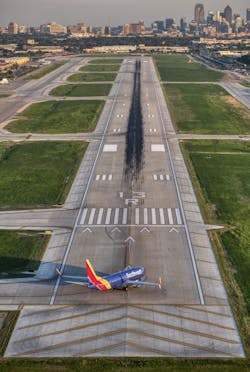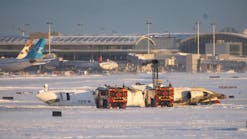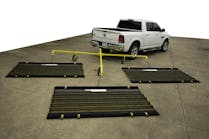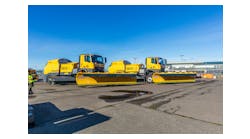Airport Business 2023 Project of the Year: Dallas Love Field Runway 13R-31L and Taxiway C Phase 1
Using a cutting-edge design method and adhering to high standards for sustainability, the reconstruction of Runway 13R-31L at Dallas Love Field Airport (DAL) enhances airfield safety and improves airfield efficiencies.
At 8,800 feet long, Runway 13R-31L serves as the main commercial air carrier runway at DAL. Originally constructed in the 1960s, it was last rehabilitated in 1990 with a concrete overlay with a 20-year design life. It remained in service for 31 years and saw a dramatic increase in air traffic and change in fleet mix when the Wright Amendment, which limited air traffic at DAL, expired in 2014. Pavement evaluations showed the runway condition had deteriorated to a point beyond repair.
This project rebuilt 13R-31L at the same length and width to current FAA regulations. It included demolition of the existing pavement, reconstruction of a portion of parallel Taxiway C, new connector taxiways to the runway, upgrades to storm drainage and the runway safety areas, and new lighting.
Construction began in March 2021 and included a 14-month runway closure. The project encountered many challenges during construction including COVID-19, adverse weather and market condition impacts. Despite these challenges, the project was able to mitigate a 7-month delay by reducing it to 4 months on the runway closure and only 2 months on the overall project schedule. The project was substantially complete in October 2022.
Marissa Sanchez, assistant director for the City of Dallas Department of Aviation, said, “The reconstruction of 13R/31L and Taxiway C – Phase 1 is significant in allowing DAL to remain a leader in the national air transportation system. The 30-year design will help in ensuring our infrastructure can keep up with the demand for serving our customers and enhance safety for operations. As one of the busiest medium hub airports in the country, it was imperative to plan and design this project in the most efficient way possible.”
A top priority was creating a highly efficient layout for aircraft operations to maximize the airport’s overall capacity. To address that need, the design team took a clean slate approach to design and analyzed five years worth of data in the FAA’s landing events database collected at specific airports via Airport Surface Detection Equipment, Model X (ASDE-X). This precise ground radar system provides information on runway occupancy times, threshold to exit taxiway distances and deceleration rates for specific aircraft. "Using this innovative methodology resulted in a vastly different taxiway geometry and met the goal of creating a much more efficient airfield with more capacity," said Ryan Shropshire, PE, Aviation, HNTB.
In keeping with the airport’s commitment to the environment and sustainability, construction practices aligned with the Institute for Sustainable Infrastructure rating criteria. Approximately 92 percent or 160,000 tons of the base course was recycled from existing pavement, and the crushing process generated finer material used as pipe bedding. Demolition waste was also re-purposed as temporary haul roads, and 85 percent of the earthwork was utilized on site, reducing hauling efforts and associated costs and emissions. During construction, solar-powered taxiway edge lights for temporary taxiway routes were used during construction. New LED lights and signs installed on the runway and taxiway have resulted in a reduction of up to 70 percent in fixture load.
To keep the community apprised and engaged in this significant airport improvement, the team used DAL’s Good Neighbor Program to gather feedback and provide project updates to external stakeholders. The general public also received quarterly updates on noise impacts through the Love Field Environmental Advisory Committee. Monthly internal stakeholder meetings kept tenants, fixed-base operators and airlines well-informed.






